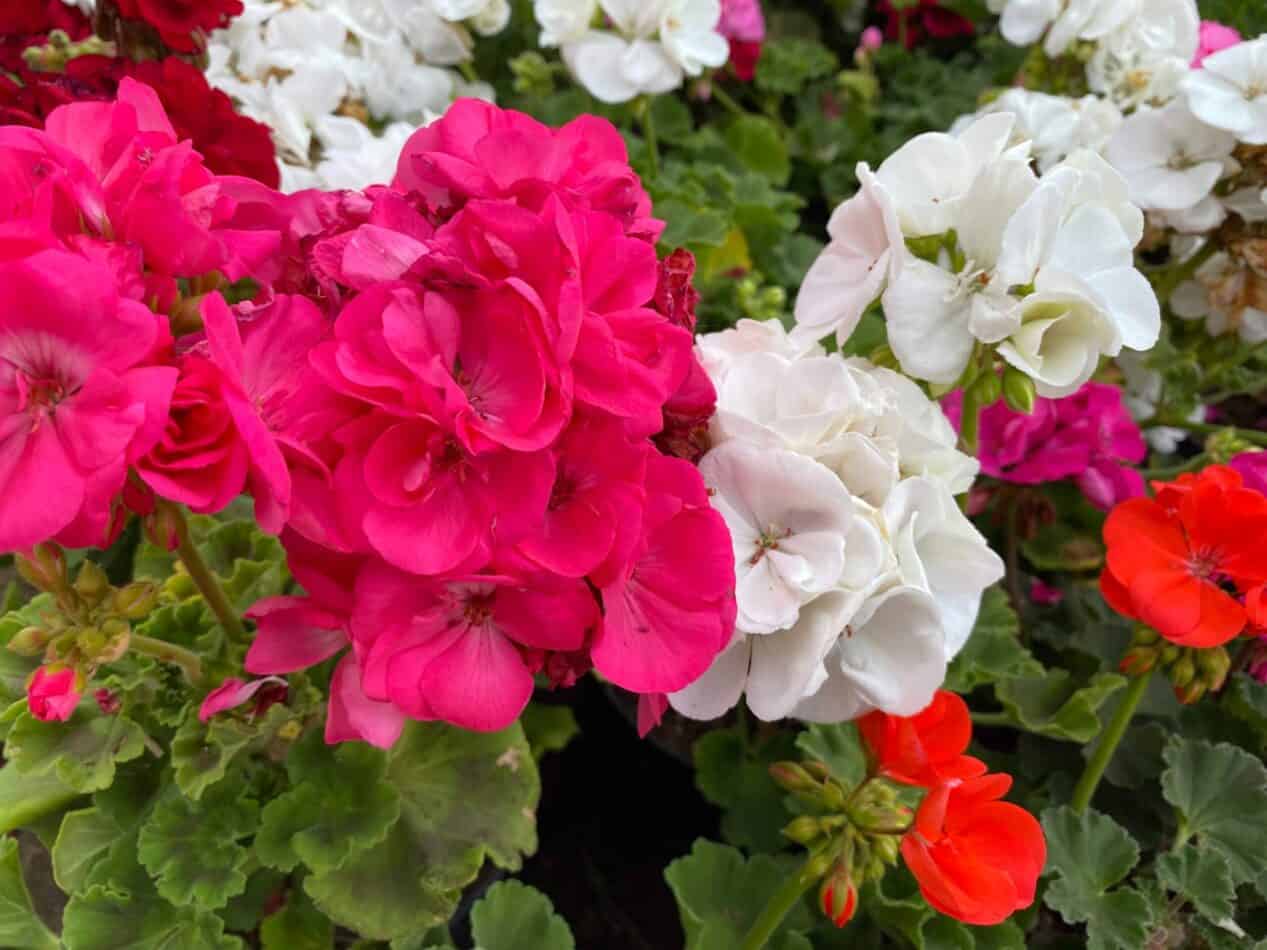The Japanese Camellia, or Camellia sasanqua is one of the most beloved fall flowers. There are around 250 species of Camellia, and Camellia sasanqua is a gorgeous fall flower. As the rest of your garden begins to fade, the Camellia opens and extends the colorful joy of your garden. Depending on where you live, they can continue blooming well into winter. They grow to around three inches wide, and each flower only lasts a few days. The shrub itself can grow up to 12 feet tall. Colors range from white, light pink, rose to cherry red and are delicately scented.
Etymology
The genus Camellia and Camellia sasanqua were named after the Jesuit botanist Georg Joseph Kamel. Camellia sasanqua’s scientific name has its origins in the Japanese phrase ‘sazanka-cha’, which refers to the tea shrub that was thought to bear a resemblance to the Camellia genus. As for the species name ‘sasanqua’, that references the cool autumn months during which the tree blooms, in contrast to the summer flowers of the Camellia japonica.
How to Plant
When planting Camellia sasanqua, place the shrub in an area with medium sunlight in well-drained soil. Soil should have a neutral pH balance or slightly acidic. Regular irrigation is also essential, while avoiding areas where standing water is a common occurrence. If you live in a climate that has cold winters, mulching is recommended. Mulch should be 2 to 4 inches deep, but take care to cover the base of the shrub and not the crown. During the warmer months, it is important to keep the area around your shrub watered and mulched.
Meaning and Symbolism
Camellia has several meanings. In China, the plant has a staggering history as a symbol of greatness, love, feminine tenderness, and longevity. It has an association with the East Asian fortune God, who sent the flower to show his blessings and that he was listening. In Japan, where Camellia sasanqua was originally discovered, the flower is associated with a sense of romance and loyal love.
History, Mythology, and Religious Significance
Camellia sasanqua has been all over the world since ancient times, originating in China and trading its way to the rest of the globe. Throughout history, it has been known as an herb of great exceptional beauty, with the Chinese invoking it in their proverb, “The auspiciousness of a hundred herbs is not to be compared to the magnificence of the camellia”. There have been multiple mentions of the Camellia sasanqua flower in Buddhism and other ancient writings, making it part of Chinese and Indian culture for thousands of years.
Flower varieties and their defining characteristics
The genus Camellia has many species, including Camellia sasanqua, japonica, × williamsii, reticulata, and sinensis. These varieties share a few defining characteristics. Generally, Camellia flowers have papery petals and colorful hues of red, pink, white, and yellow. They are also prized for their intense aroma, as some of their petals have a strong, sweet smell.
Camellia sasanqua, also called Japanese Camellia, is an evergreen shrub that typically grows to heights of 2-10 feet. Its flowers are 2-3 inches in size, and come in shades of white, pink, and red. It usually blooms for six to eight weeks starting in early fall and continuing through late fall.
How to Pot and Repot
When potting Camellia sasanqua, choose a pot with plenty of room to allow the roots to offshoot, ensuring a healthy and strong growth. The best soil to use is a good-quality organic potting mix, as this will give the camellia enough nutrients as it grows. Repotting should be done every 2-3 years, either in the early spring or in late summer. When repotting, gently remove the roots and trim off any dead portions of the roots, then replant the root ball in an appropriate-sized pot with fresh potting mix.
How to Prune
Pruning is an important step in keeping Camellia sasanqua healthy. Pruning should be done in the early spring, before new growth begins. Use sharp pruning shears and prune selective branches and stems to promote a healthier growth pattern. When removing branches and stems, make sure to cut them at an angle and as close to the trunk as possible. Additionally, pruning can be used to thin out the branches to increase light flow and air circulation to the shrub, as well as to give it a more appealing shape.
How to Propagate
Camellia sasanqua can be propagated in a few ways, such as seeds, cuttings, or layering. Seeds are the most common way of propagation and should be sown in the spring or fall. Cuttings are taken in the summer months and should be taken from healthy stems. When layering, a stem should be bent down and the portion of the stem that is touching the ground should be covered with soil. After roots form, it can be cut away from the parent plant and moved to a new pot.
Common Pests and Diseases
Camellia sasanqua can be prone to insect infestations and various diseases, such as mildew and blackspot. Insects such as aphids, scale, and mealybugs can all cause damage to the plant and should be controlled with chemical sprays. Furthermore, Camellia is also susceptible to fungal and bacterial infections, such as powdery mildew and black spot. Proper pruning, fertilization, and location can help to avoid issues with these diseases.
Frequently Asked Questions
1. What are suitable growing conditions for Camellia sasanqua?
Answer: Camellia sasanqua should be planted in an area with partial sunlight in well-drained, slightly acidic soil of a neutral pH. Regular watering is also important for this species of Camellia.
2. What type of pruning should be done for Camellia sasanqua?
Answer: Pruning should be done in the early spring before new growth begins to encourage healthy and strong growth. When pruning, make sure to use sharp pruning shears and cut stems carefully at an angle, as close to the trunk as possible.
3. How long will a Camellia sasanqua flower bloom?
Answer: Camellia sasanqua typically blooms for six to eight weeks, starting in early fall and lasting through late fall.
Table Fact Sheet
| Camellia | Camellia Sasanqua |
|---|---|
| Family | Theaceae |
| Plant Type | Perennial Shrub |
| Mature Size | 2 – 10 feet |
| Sun Exposure | Partial Sun |
| Soil Type | Well-drained, slightly acidic soil (neutral pH) |
| Soil pH | Neutral |
| Bloom Time | Early Fall to Late Fall |
| Flower Color | White, Pink, Red |
| Hardiness Zones | 7 – 9 |
| Native Area | China, Japan |
What we love from Amazon this week
Buy these wonderful flowers directly from Amazon:















